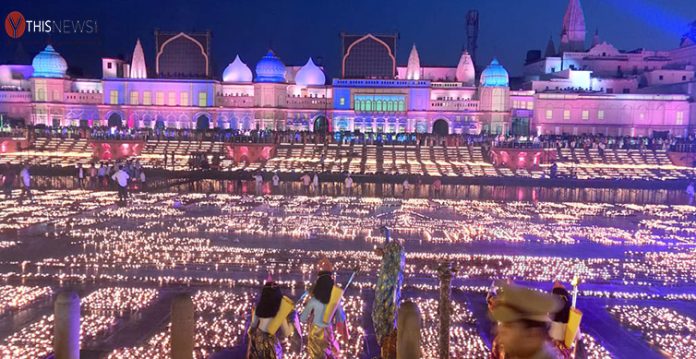After ‘Deepotsav’ in Ayodhya, it is now time for ‘Dev Deepawali’ on the ghats of Varanasi.
The ‘Dev Deepawali’ festival, this year, will be special since President Draupadi Murmu will grace the occasion.
The festival falls on the full moon of the Hindu month of Kartika (November – December) and takes place 15 days after Diwali.
The steps of all the ghats on the riverfront of the Ganges River, from Ravidas Ghat at the southern end to Rajghat, are lit with more than a million earthen lamps (diyas) in honour of Ganga River, and its presiding goddess.
ALSO READ: Taj Mahal and Qutab Minar next right-wing targets after Ayodhya, Kashi, Mathura
Mythologically, the gods are believed to descend to earth to bathe in the Ganges on this day. The festival is also observed as Tripura Purnima Snan.
During Dev Deepawali, houses are decorated with oil lamps and coloured designs on their front doors. Firecrackers are burst at night, processions of decorated deities are taken out into the streets of Varanasi, and oil lamps are set afloat on the river.
Owing to the significance and the growing socio-cultural popularity of this festival, it has now also come to be celebrated in nearby districts such as Mirzapur.
‘Dev Deepawali’ is also a major tourist event and people from all over the world come to see this world-famous festival. This year the Dev Deepawali festival will be celebrated on November 7.
State ministers Ravindra Jaiswal, Dayashankar Mishra Dayalu and MLA Saurabh Srivastava along with the divisional commissioner Kaushal Raj Sharma, municipal commissioner Pranay Singh and other officers have inspected the entire riverfront.
The work of removing the silt deposited on the steps of the ghat due to floods is being done on a war footing by the Varanasi Municipal Corporation.
“But since it is not possible to completely remove the silt from the Ghats till Dev Deepawali, it has been decided that wherever suitable space is available, a wide drain should be made in the soil near the stairs and connected with the water of the Ganga to bring the water of Ganga near the steps of the ghat, and make it accessible for worship and ‘deepdaan’,” said an official.
(This story has been sourced from a third-party syndicated feed, agencies. Raavi Media accepts no responsibility or liability for the dependability, trustworthiness, reliability, and data of the text. Raavi Media management/ythisnews.com reserves the sole right to alter, delete or remove (without notice) the content at its absolute discretion for any reason whatsoever.)







